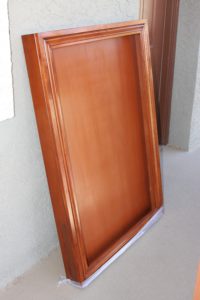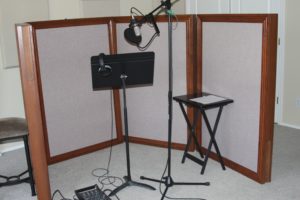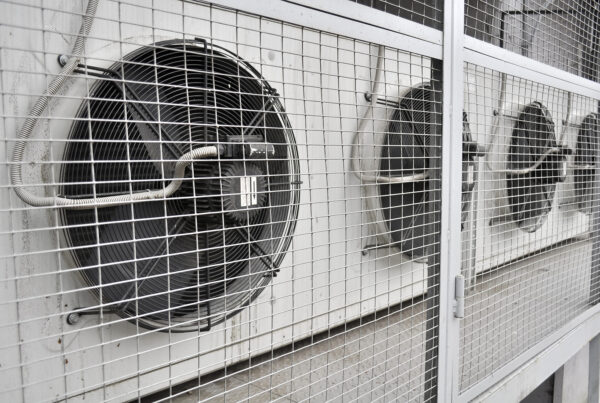DIY Acoustic Foam
DIY acoustic foam or open celled foam is everywhere. Manufacturers make foam out of triangles, rectangles, and even half spheres. There are many colors of foam available and some acoustic foams are covered with raised areas that some manufacturer claim adds to the diffusion coefficient of the foam. I do not know about that. Foams are economical and efficient at absorbing frequencies from 125 Hz. – 7,500 Hz. but most foams currently available are not attractively packaged.
Acoustic Treatment Component
You spend a lot of money on your gear. Microphones alone, if you are in the recording business, can amount to a small fortune. In playback mode, one has a room to listen to music in and that room must have room acoustic absorption and diffusion technologies. One does not want to have lots of foam squares, or triangles hanging around on the room walls. Sound absorbing acoustic foam can be made to look attractive and compliment any room decor design or color combination.
Sound Energy To Heat Energy
No matter what the sound absorbing foam one wants to use, we need to put the foam into an attractive case. Not just any box or frame but one that is designed to allow for the proper air flow. Room acoustic open celled foam requires air flow to work. Air must flow over and through the foam in order to cause the foam to “vibrate”. Vibration produces heat which changes our sound energy into another energy form namely heat, thus causing absorption. Our new foam cabinet allows for proper air flow, so absorption can occur regardless of foam used.
Not Just Any Fabric
The fabric face of our foam box must allow for the proper air flow movement to the foam inside. Not just any “acoustically transparent” fabric will work. One must choose one that allows for maximum air permeability and also offer attractive appearance at the same time. There are only a few fabric manufacturers that make fabrics that can produce the highest noise reduction coefficient and can do that with a multiple fabric color choices and textures. We can assist you with fabric texture selection, color, and cabinet finish choice.
Fabric Binding Process
To stretch and attach the fabric requires a special binding process to the cabinet edges. Our build drawings and actual build photos will illustrate the technique that we have used for over 7 years to stretch and attach fabric across our production units. The frame assembly that covers the fabric attach technique can be made thin or wide or anything in between to accommodate your existing design and room decorum.
Basic Wood Skills
When you build your own foam cabinet, you can paint the cabinet, stain a solid piece of wood or veneer, or choose a completely different surface material to use. You control all the variables when you build your own units even the size of the unit. All that is required is basic wood working knowledge and some standard shop tools. If you do not have the woodworking skill set to build the units yourself, we can assist you with the design and you can have someone build them for you. We are available through email with 12 hour turn around to assist and answer with any question or issue.
Not Just Any Foam
Foam is cheap and economical to buy and use. However, one must look carefully at the rates and levels of absorption the chosen foam provides. Make sure it has the rate and level you need to accomplish your acoustic goals. Certain foams work well above 250 cycles. In fact, most foams absorb above 250 Hz., few do well below that level. Foams that do well below 250 cycles, acoustically assist us with proper vocal range absorption rates and levels to maximize the power of the human vocal range which starts at 100 Hz. Make sure your foam choice is tuned to its intended use whether in recording or playback mode. At Acoustic Fields, we can provide you with fabric and foam, you do the rest.
Reflection Management
Your new foam cabinets can be positioned in your recording studio, listening rooms, and home theaters in areas where you must reduce the rate and level of reflections, so they do not impact the direct sound from your speakers or monitors. Side and rear wall reflections must be reduced so they do not mess up the time signature of the direct wanted sound from our loudspeakers. We do not want room sound in our mixes or too much room sound in our stereo presentations at the listening positions. Lower reverberation times are always needed and foam is an economical way to achieve them.
Build Drawings
The DIY Acoustic Foam Cabinet plan set includes actual build drawings, assembly instructions with actual build photos to explain each step of the assembly process along with a material list, cut sheet, and even a tool list. Any questions on cabinet construction, contact us at:info@acousticfields.com Build your units and take a picture of them. We will place your unit photos on our web site. Contact us at:info@acousticfields.com







